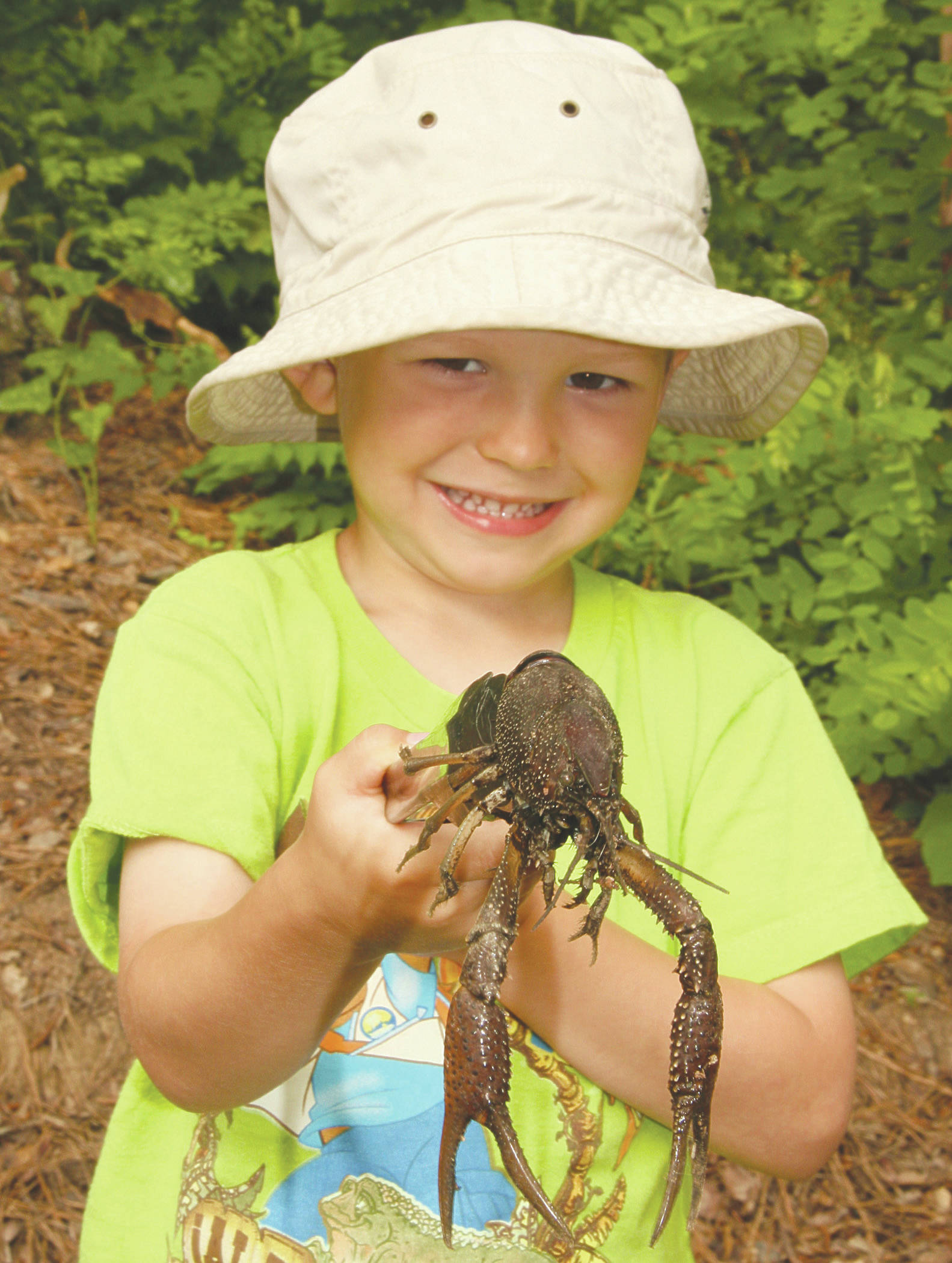My rubber knee boots provided little traction as I slowly slid down the mucky side of the bank toward the muddied water. The soft mud of the water’s edge impeded my movement and slowly took hold of my boots as I sank into the primordial ooze above my ankles.
I peered through the water at a tangle of chicken wire that I had baited a few hours earlier with some cut bait and chicken livers. I saw a greasy film on the water around the trap and spotted some movement from inside. I lifted the trap out of the water and heard the snapping of tails and claws. I turned and tossed the trap up the bank to my son Wyatt for closer examination.
I turned to go back up the bank, pulling one foot free from the muddy hold. As I pivoted and tried to pull my other boot free, my foot pulled out of the boot and I landed with a “thud” on the bank of the bayou. My son pointed and yelled, “Dad, your boot fell off!” I pulled the boot free and climbed the bank to empty the crawfish into our bucket to take home.
The story above was back in 2008 when my son Wyatt was 4 years old. Our family has lived in several states since then and we have had many adventures on refuges along the way. I have had the pleasure of working in some amazing places as a park ranger. One of the many benefits of living and working at a refuge is spending my days off pursuing my passions of hunting and fishing.
Working at White River National Wildlife Refuge in southeastern Arkansas saw my freezer stocked with venison, catfish and yes, even squirrel. Working at Kenai National Wildlife Refuge, my freezer is bright with sockeye salmon and ruby red grouse while dehydrated morels grace the shelf.
National Wildlife Refuges like Kenai allow for collection of berries, edible plants, and of course fish and game for personal, noncommercial use. In addition to being an excellent food source, each harvest comes with a pre-ready, vacuum-sealed memory as well. Every time I reach for some mushrooms to add to a stew or thaw out some grouse to make my favorite kabobs, the memories of the hunt and harvest fill my thoughts.
My favorite things to harvest from refuges are the unusual. Living in Southern Arkansas, I never imagined chasing after crawfish would keep a family of four so well fed and especially entertained. We kept a small plastic pool in the yard with a slow leak so we could “purge” the crawfish and allow some fresh water to clean them out on both the inside and outside before conducting a “boil” and inviting friends for dinner.
My children’s favorite pastime was to relocate the crawfish to random places around our home using a pair of hot dog tongs. More than once, I would hear a startled scream as my wife discovered a mudbug in the sink when she went to wash dishes or a giggle as a sibling knew it was the other’s bath time and a small crustacean had been strategically placed in the tub.
I recall one Saturday morning I decided to sleep in. I could hear little feet running back and forth in the living room with poorly suppressed laughter. I walked out of the room to see two smiling faces that wanted to go for a walk with me and urged me to put on my boots right away. I glanced over to see my boots frothing with tiny clays and eyeballs boiling out of the top. I did what any good dad would do and pretended to put them on as I let out an exaggerated scream of pseudo pain.
We do not catch crawfish on our local refuge now but there are some other special oddities that have become family traditions. Every year after Thanksgiving, we load up in the old four-wheel drive sleigh and head to Kenai NWR to look for our very special Christmas tree.
The refuge allows one spruce tree per household per year no more than 20 feet in height from Tha nksgiving to Christmas Day. Trees may be taken anywhere on the refuge with hand tools, except within the 2-square mile Refuge Headquarters area, and at least 150 feet from roads, trails, campgrounds, picnic areas and waterways.
Just like the bounty in the freezer, each tree we harvest has a story. This year my 15-year-old daughter, Bailey, oversaw selection and cutting of the tree. We went out early afternoon and I am glad I brought my gear bag as, by the time she made her selection, we were wearing headlamps and taking caution to remember our egress.
After a long walk and sharing multiple quotes from National Lampoon’s Christmas Vacation, the perfect Conner Christmas tree was discovered. Bailey quickly cut it down and posed victorious, standing over it as if she had slain a great beast. She drug it back to the truck feeling accomplished and proud of our excursion.
As we decorated the tree (and every refuge tree prior), we tried to convince each other that this tree was as nice as any that we could buy on a tree lot. I think we all knew that this was not true aesthetically speaking, but our meaning was deeper than the superficial.
Our tree is a manifestation of living next to a National Wildlife Refuge that provides habitat for plants and wildlife, and memories for visitors that embrace and explore what refuges have to offer. Refuges truly have everything from crawfish to Christmas trees!
Matt Conner is the Visitor Services Manager at Kenai National Wildlife Refuge. Find more information at http://kenai.fws.gov or http://www.facebook.com/kenainationalwildliferefuge.
By MATT CONNER
Kenai National Wildlife Refuge



